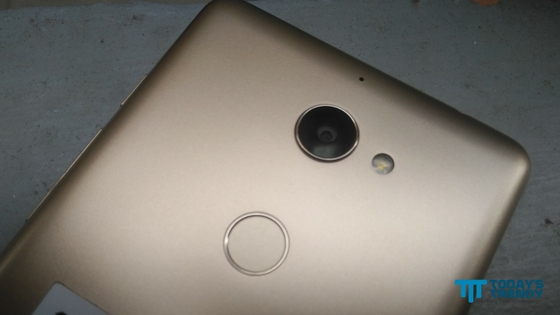A few days ago, we shared the
first impressions we had of the LeEco Le 2. Note that this smartphone was
launched in India last month. In this post, we are going to share the detailed review of this device.
LeEco Le 2 box contents
The box contains the handset, a travel adapter, a USB cable for charging and data syncing, a quick start guide, a SIM ejector tool, a USB Type-C to 3.5 mm jack converter, and a transparent rear smartphone cover. There are no earphones in the box. However, the USB Type-C based CDLA earphones are separately available (they are being offered without any extra charge as of today).
LeEco Le 2 build and design
The rear body of this smartphone is made up of metal. It is slightly textured with a dark color band on the top and the bottom. These bands continue on either side of the device as well. The device has rounded corners and chamfered edges, which makes it easier to hold.
The Menu, Home, and Back capacitive touch buttons are backlit. However, under direct sunlight, the lights are unable to make their presence felt.
The back panel of the device is non-removable. This device has two nano SIM card slots on the left, which can be accessed by using the SIM ejector tool. Only one slot supports 4G LTE at any instance in time. There is no micro SD slot.
The device has a solid metal unibody design, giving it a premium look. It is similar to that of its predecessor
LeEco Le 1s and its sibling
LeEco Le Max 2. It is considerably light in weight (only 153 grams) when compared to other phones of the same size.
LeEco Le 2 features
Concerning specifications, the device features a 5.5-inch full HD display with a resolution of 1920x1080 pixels. It is powered by 1.8 GHz Qualcomm Snapdragon 652 octa-core processor, 3 GB RAM, 32 GB internal storage, which is non-expandable. It runs on Android 6.0 with LeEco's custom layer, the EUI OS, and packs 3,000 mAh battery. It also features a 16 MP primary camera, along with a 8 MP front-camera.
The smartphone possesses acceleration, gravity, gyro, light, linear acceleration, proximity, rotation vector, significant motion, step counter and step detector sensors. It does not have pressure, ambient temperature, heart rate, and relative humidity sensors.
LeEco Le 2 software
The device runs on Android Marshmallow, with its custom skin as a topping. It is called the EUI OS. The app drawer is missing. The apps are placed on the home screen instead. The home screen has pages to house as many apps as needed.
The place where the usual app drawer icon sits is the new Live icon. It is the entry point to their live TV streaming content offering. There is a broad range of channels to choose from, including various news, music and movie channels. Other than Hindi and English, there are a few channels in other Indian languages as well. This package is available for free for the first year.
Swiping in from the left of the device opens the LeView. It is the commercial name for their in-house video curation service. This proves the weight the manufacturer is putting on content.
There are many bloatware apps installed, which according to me is a negative point given the limited storage.
LeEco Le 2 performance and benchmarks
Gaming on this device is a good experience. The device has a 1.8 GHz octa-core processor backed by 3 GB RAM. No lags were observed while playing massive games, or while launching and switching between apps. There is no heating issue as well. The call quality is decent. Running 1080p videos is an enjoyable experience; no hiccups observed. Overall, the device offers a smooth performance and is suitable as far as multi-tasking and browsing are concerned.
As far as the fingerprint sensor is concerned, a hit-to-miss ratio of 2:5 is observed.
The device scored 81,631 on AnTuTu, and 35,421 on Quadrant Standard benchmarks. You can find the rest of the scores
here.
The device supports ten-finger multi-touch, i.e., the touchscreen can detect (and act on) ten touches at any instance in time.
LeEco Le 2 display
The device features an FHD display with a resolution of 1920x1080 pixels. It comes with a 5.5-inch screen. When the display is switched off, the thin bezels on the left and right disappear into the dark, making it look bezel-less from the sides.
When indoors, the screen is sharp and bright, and color reproduction is rich and vibrant. However, take it outdoors under sunlight and it comes barely visible due to its reflective nature. The viewing angles and contrast levels are good. However, it is very prone to fingerprint smudges.
You would have read about the creaking sound that the display produces when pressed hard. Believe us; it is not an issue. The manufacturer claims that it is by design, and a gasket has been intentionally placed beneath the screen. Moreover, why would anyone long press on the screen. This ain't no 3D touch!
LeEco Le 2 camera
The device features a 16 MP rear camera, along with a 8 MP front-camera.
The camera offers various shooting modes, viz. Auto, Manual, Panorama, HDR, Night, Beauty and Scenic modes. There is also an option to capture slow-motion videos.
The primary camera is good. Phase Detection Auto Focus works smoothly. We have never experienced delays in locking the focus on a subject. However, the inconsistency comes while maintaining the white balance. The color reproduction is also unnatural. In low-light, too much noise creeps in, making the colors go haphazard.
The front camera is fantastic. We fell in love with the selfies we clicked.
Find below a few sample images clicked using this device's camera:
LeEco Le 2 battery life
The device packs 3,000 mAh battery. Given the screen size and all the multimedia content the device offers, we wonder why didn't they opt for more battery juice. On 4G, we got only around 7 hours of backup before we had to search for the USB Type-C charger to refill the stock. The fast charging support is a bit relief.
Why should you buy it?
1. Premium design
2. Impressive performance
3. Multimedia content package
Why shouldn't you buy it?
1. Inconsistent camera
2. No 3.5 mm audio jack
3. Not-so-great battery backup
LeEco Le 2 verdict
If you are someone who consumes a huge amount of video content on their smartphone, the LeEco Le 2 is a perfect companion. There is also the added advantage of live TV streaming.
However, if you are more of a music buff, then you might not opt for this device given the replacement of the standard 3.5 mm audio jack with a relatively new USB Type-C powered audio output. After all, you cannot enjoy your latest musical while the device is busy restoring its battery juice.
Considering all aspects, it is a decent offering for ₹11,999 ($180 approx.).
LeEco Le 2 specifications
Operating System: Android 6.0 (Marshmallow)
Processor: 1.8 GHz octa-core
Memory: 3 GB RAM
Storage: 32 GB internal (non-expandable)
Display: 5.5-inch full HD
Resolution (pixels): 1920x1080
Primary camera: 16 megapixel
Secondary camera: 8 megapixel
Battery: 3,000 mAh
Dimensions (WidthxHeightxDepth): 74.2x151.1x7.5 mm
Weight: 153 g
Rating: 4.2 out of 5 stars
Price: Get a price on the
LeEco Le 2
LeEco Le 2 recommended accessories
Golden Sand premium series tempered glass for LeEco Le 2
Kartuce back cover for LeEco Le 2
LeEco Le 2
Reviewed by Garg Ankit Rating: 4.2































